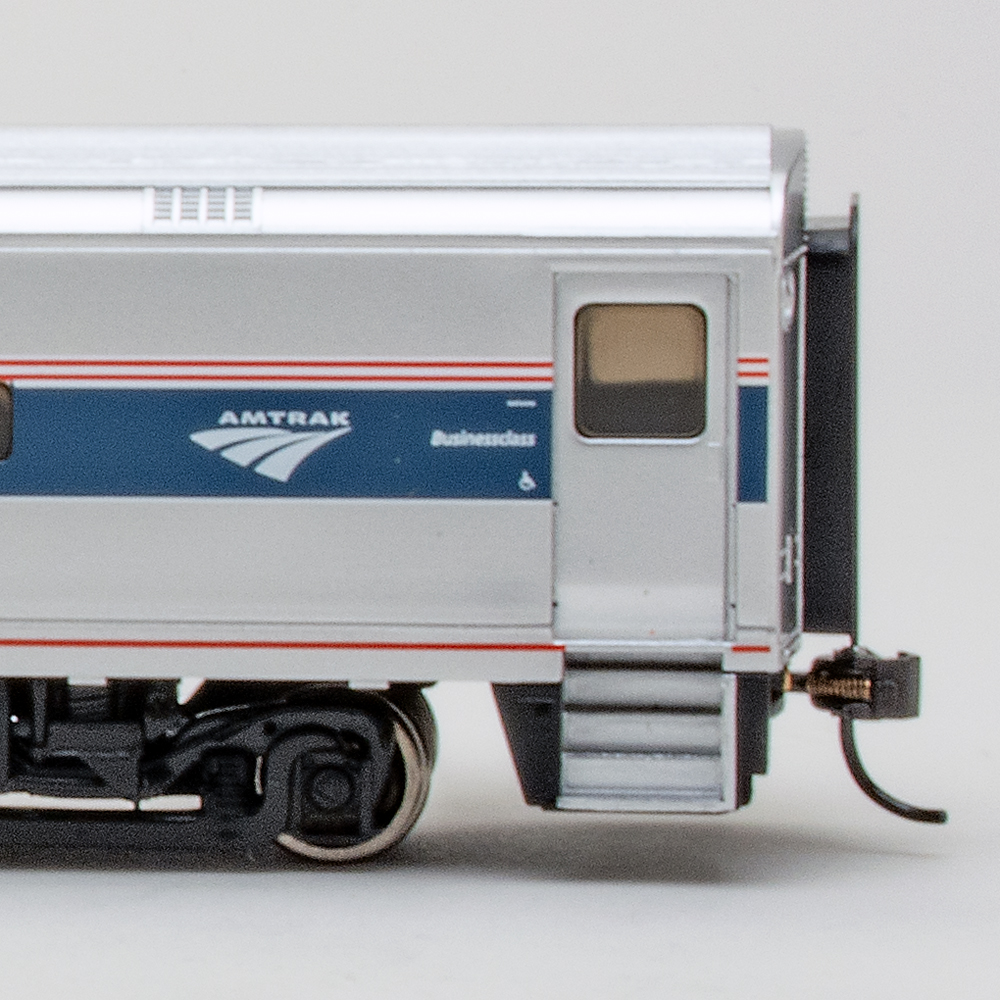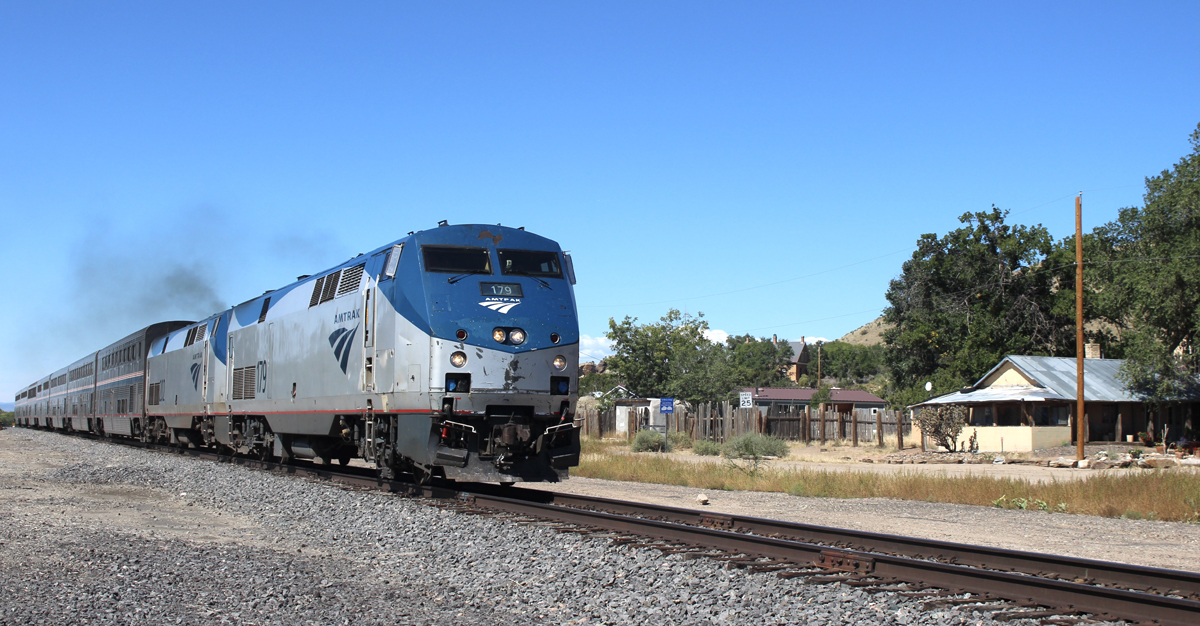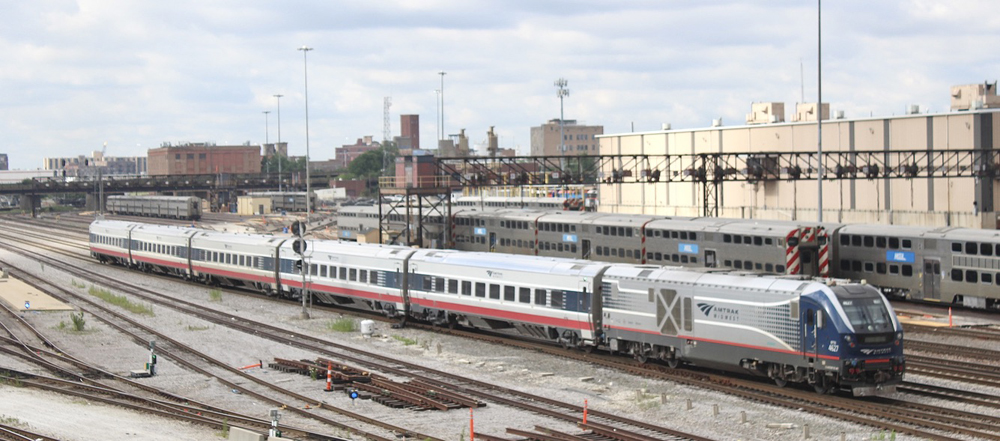SAN FRANCISCO – A privately funded project to operate a nightly first-class passenger train between San Francisco and Los Angeles is underway, the SFGATE reported. Dreamstar Lines Inc., based in Newport Beach, says it’s working on lining up passenger cars, financing, staffing and agreements to operate the new service on the route once served by Southern Pacific’s overnight Lark.
Dreamstar founder Tom Eastmond, who works as an attorney, told the GATE that the service would offer travelers an appealing journey while they sleep in private rooms. The train would leave at about 10 p.m. and arrive at around 8:30 a.m. Eastmond said Dreamstar is talking with Union Pacific and commuter system Metrolink, which each own or control part of the 470-mile route. Both railroads confirmed they are discussing the proposal. “Union Pacific is engaged in discussions with Dreamstar Lines Inc., regarding this proposal,” UP spokeswoman Robynn Tysver told SFGATE. Dreamstar representatives recently presented “high-level plans for the proposed service to Metrolink staff,” said Scott Johnson, Metrolink’s director of communications. “More in-depth details and analysis would be needed for the service to move forward.”
Dreamstar would also need an agreement with the Peninsula Corridor Joint Powers Board/Caltrain, which owns the tracks from San Jose to San Francisco. Eastmond said the company intends to contact Caltrain “once we’ve gone further down the road with UP.”
Dreamstar said it has lined up two advisory board members with railroad experience, including former Caltrain/SamTrans CEO Mike Scanlon. Scanlon joined the advisory board because he was “intrigued by the fact that you’re going to combine the transportation industry with the hospitality industry,” he told the Gate. “You’ll have a moving hotel room, for a niche audience. It could be practical, economical and a lot of fun. I think it can work.”
Most ticket sales would be electronic, and an app could help riders arrange food and related services. The company is negotiating with owners of streamline-era cars to equip the train, Eastmond said. The usual train would be five to six cars, all sleepers and a lounge car. There would be no diner. Fares would cost roughly $300, $600 and $1,000, he estimated, for a one-person roomette, two-person bedroom or premium room. The goal is to charge less than Amtrak.
“Improve mobility. That’s our objective,” Dreamstar President Jake Vollebregt told the GATE. “We have a lot of work to do, but the need is there, and we’re going to see if we can join stakeholders, both public and private, to create a partnership that’s sustainable and profitable.”
Dreamstar hopes to begin service in summer 2024, said Eastmond. The company would need agreements and more funding first, and a contract with Union Pacific. “In our investment pitch, we’re saying we make a decent profit with six cars,” he said. “Our model is based on about 45,000 riders per year, or 62 per train. That would be a 75% load factor.
As for financing, Eastmond said: “I can say very little. We will be doing another round. Do we have money to start service tomorrow if all contracts come into place? No, we haven’t tried that yet,” Eastmond said. “We’ve looked at some of the other ventures, and we understand the dangers of being undercapitalized. So, we’ll be raising some more in the future,” he told the GATE.
Southern Pacific’s overnight Lark operated on the route from 1910 to 1968. Between 1981 and 1983 the state of California subsidized an overnight Amtrak train on the route called the Spirit of California, but then-Governor George Deukmejian cut funding for the train after taking office in January 1983. The train was discontinued on Oct. 1, 1983.














A lot of great comments. I think some agreeable points are as follows.
This is a niche market high end model that end of day might have some economic basis in my mind if they stick with three and only three stops being San Fran 4th street station, San Jose and LA Union station. You have to do it both ways. Yes, their it be a few who incorporate an overnight trip on rail with a return flight. Lets not forget it is serving metro areas of 20 million people, 8 mil up north and 12 mil up north.
Logistically this should be easier once coaches in hand than Amtrak’s auto train, moving people only not people & cars, so maybe not as a big of market but 20 million people is big enough
Finally, this is not a business commute play as going back to the niche market comment. I live in the Bay area and I have done plenty of OAK to BUR, to LAX to SAN same day flights for work through the years. I don’t think this proposal has any desire to go head to head on that front.. nor it will be priced that way. I see it being priced as 5 star hotel stay as you would see in downtown San Fran, San Joes or LA.
To Charles comments on CaHSR. I’m a big supporter of high speed rail but for the life of me can’t understand why Cali/Jerry Brown tried to reinvent the wheel when creating the separate standalone CaHSR. Not going to true & tried organizations/agencies from the start was a huge blunder. Caltrans should have been the lead from the get go with their huge expertise and experience with everything from real estate acquisition, to right of way outreach, to environmental to utilities to bridge building which was all required whether it is a highway or railway from ground up even before a single piece of rail is needed to be laid.
While an overnight train trip on a (presumably) luxury sleeper from San Francisco to Los Angeles sounds nice, the business case for this idea seems questionable and quite speculative. The numerous issues cited above (equipment/operations/liability insurance/economic viability/etc.) suggest this is a pipe-dream that will be no more than a visionary idea from these Dreamstar (what an appropriate name!) promoters.
And to Mr. Landey’s very good points above, the California ‘HSR’ project will not be built (or at least not to what was promised to the voters, 130-mile HSR line to “nowhere” in the central valley anyone?).
I wonder if Mr. Eastmond is familiar with the ‘Transisco 49-er’ luxury train that ran from the San Francisco bay-area to Reno, Nevada back in the early 1990s (late 1990-1992?). While it was not an overnight sleeper train, it was touted as a “luxury” train for (presumably) well-heeled gamblers to travel from the Bay Area to Reno, NV. It lasted barely a year before going bust (expensive fares, low-ridership, poor marketing, etc.).
I don’t recall what happened to all of the passenger cars (they had several luxury dome cars) after the ’49-er’ operation shut down, but the three EMD F-45 locomotives (ex Burlington Northern) went onto the Wisconsin Southern RR (and eventually to Montana Rail Link).
After thought::: Make public announcement that is will allow Amtrak/ Caltrain Capitol corridor/ Surf liner to attach physically separate coaches to rear of train. Example: Attach coach cars to end of train at LAX. Do not add any stops and escentially run limited express to San Jose. Drop partial end of coaches at San Jose and make them part of next Capitol corridor to Sacramento. Other coaches go onto downtown SFO.
Capitol corridor cars at SAC would make up southbound connection at SJC with different cars. Attach those cars to south bound train at SJC going back to LAX. Politically this might be very hard for Amtrak to refuse doing this.
FRA might like this very much for the new starts program. If the sleeper service fails it will give time for a good analysis of the potetial of establishing the night time Amtrak service LAX SFO. Many persons advocate that it is past time to run the overnight trains.
Problems to solve. Get Amtrak to operate the train. Much easier than trying to go directly to UP. 4 – 5 sleepers and lounge? Where does anyone find roadworthy and passenger worthy 8 -10 sleepers? If found how can possibly get them rehabbed by end of 2024 especially the plumbing?
The demand for sleepers is a big unknown. Auto Train is the only Amtrak train that usually has more sleeper passengers than coach. If AT is sold out then coach pass usually higher probably due to lack of sleeper space. But AT draws from a possible passenger base in the north of who knows at least 50 – 80 million. and some in Florida as well. LAX SFO cannot even come close of that population metric.
Forgot to mention arriving both locations during rush hours.
I wish them the best of success but this has a snowball’s chance in Miami. There is (was?) an overnight LA-SF sleeper bus. Ostensibly there is a market. Then again, why anyone would want to go to LA or SF these days is beyond me.
Is anyone here familiar with Austria’s OBB Night Jet network in Europe? Before the war, was anyone familiar with Russia’s many sleeper trains? Or China’s overnight HSR? A $300 fare is less than a plane ticket and hotel. While many point out UP’s liability requirements, this train service might have political backing of California’s elites. UP also has a major PR problem.
For the SFO LAX market you could take an early morning flight and return in the evening, sleep in your own bed, all for half the price of this proposed service.
UP requires a massive amount of liability insurance to run passengers on their rail. The pre-Brightline LA to LV proposal died becuase they were unable to get a policy that met UP’s requirements. It’s one reason Brightline West will lay their own rail.
I am not saying its a bad idea, the issue is UP wants a bigger pocket than theirs to run it.
Why would anyone take this train when you can go round trip by air for under $100. The train would leave after dinner time is over. So what could they possibly offer as appealing as they sleep?
We can fall asleep in tranquility flat in our beds stirring at the blue night light (an icon of 1st class sleeping car travel) in the ceiling or on the corner of the compartment.
“Scanlon joined the advisory board because he was “intrigued by the fact that you’re going to combine the transportation industry with the hospitality industry,” he told the Gate. “You’ll have a moving hotel room, for a niche audience. It could be practical, economical and a lot of fun. I think it can work.”
Hmmm…combining transportation and hospitality and ‘I think it can work’. Doesn’t sound like this guy has ever heard of The Pullman Company.
I sometimes wondered if something like this would work. But is seems a shame to run through some of the best scenery in Amtrak’s route map at night. I assume no intermediate stops, except, perhaps San Jose and maybe a suburban stop in LA, like Van Nuys or Glendale. I also think their pricing model is pure fantasy. But I’d love to be proven wrong.
I’ve occasionally wondered if there’s a market for a service like this. Just the right distance to cover overnight. Though I would suggest a slightly earlier departure/arrival time, partly to account for delays and partly to better serve San Jose SB. It’ll be interesting to see if they can actually pull it off.
If it does start, I wonder what will happen if/when CAHSR finishes and likely wipes out the overnight market. Maybe that concern is part of why they’re looking to use older cars instead of building new ones?
CalHSR isn’t going to compete with Dreamstar because there will be no CalHSR. Dreamstar will fail to launch of its own lack of economic sustainability.
Mr. Landey, you honestly remind me of all those people who say that something “will” fail. No seriously, you use “will” as if you somehow can time travel and know the future. And you also honestly believe that the more times someone says that something “will” happen/not happen, the more likely the opposite of something that someone says “will happen”/”will not happen”. How do you know that there “Will” be no CHSR? How do you know that Dreamstar “will” fail to launch? How do you know that what you stated “will” occur and the opposite of your statement is not going to occur?
Harrison – When have I been wrong in my predictions?
(1) CalHSR won’t be completed.
(2) Dreamstar makes no economic sense whatsoever.
Doesn’t mean I’m against trains. I’m for trains. These two projects have no legs.
California did a SUPERB job, 1980’s, 1990’s, best in America, adding corridor and commuter trains like the Capitol Corridor and the Santa Barbara trains and the added trains to San Diego and Metrolink and Coaster, etc. Then they totally lost their way with CalHSR.
Harrison, we post on this site because we have knowledgeable opinions on trains. It doesn’t mean we’re always right, but none of us are dum-dums.
Unless there is very substantial undisclosed financial backing here, I think the cost of liability insurance, probably indemnification regardless of cause, that would be required by UP and the others would be enough, all other issues aside, to sink this proposal, as it has so many other private passenger ideas, single-trip or repeated.
Really? No one can run a train line carrying 62 people per train, 124 per day.
Maybe they’ll prove you wrong Charles, let’s wait and see.